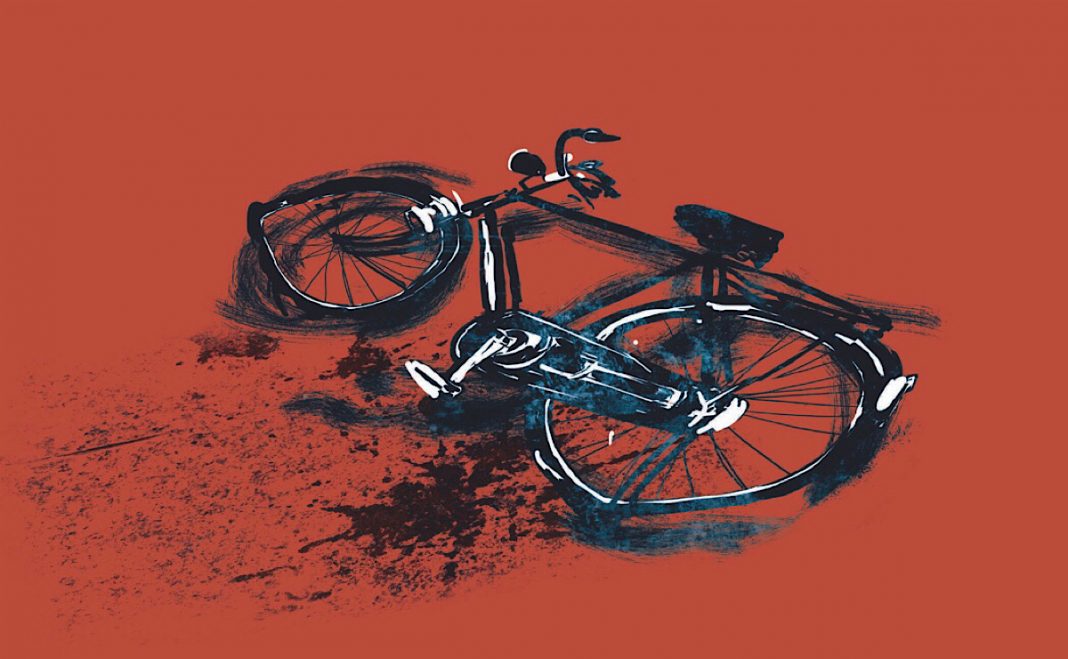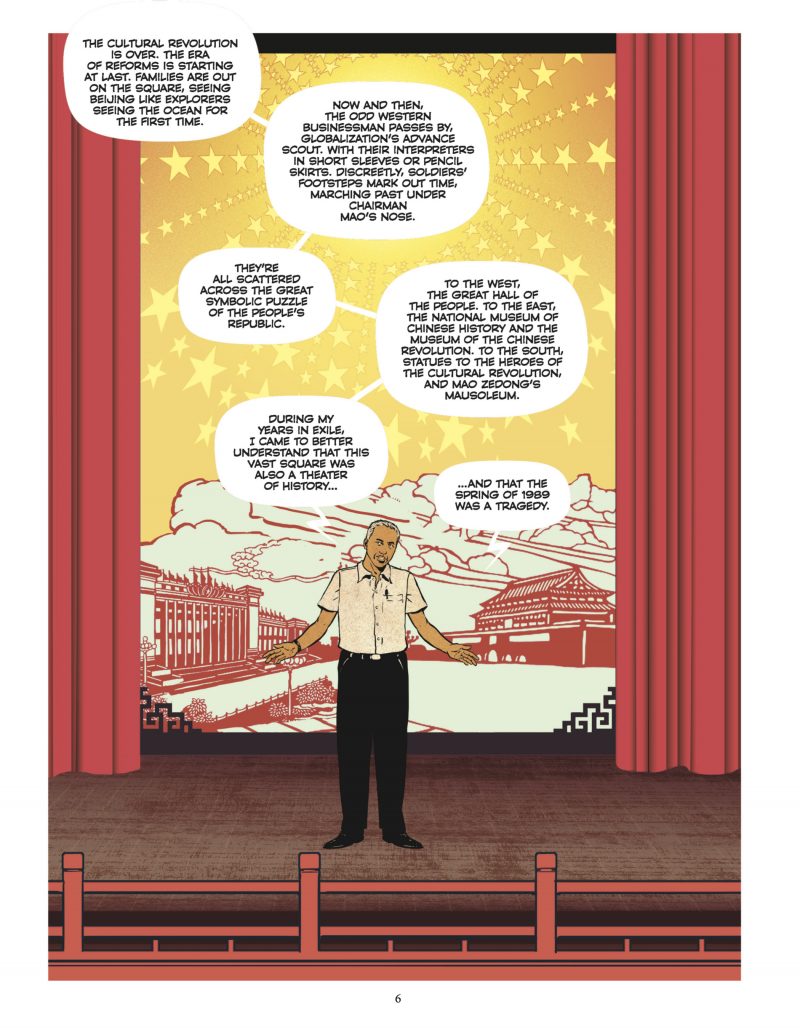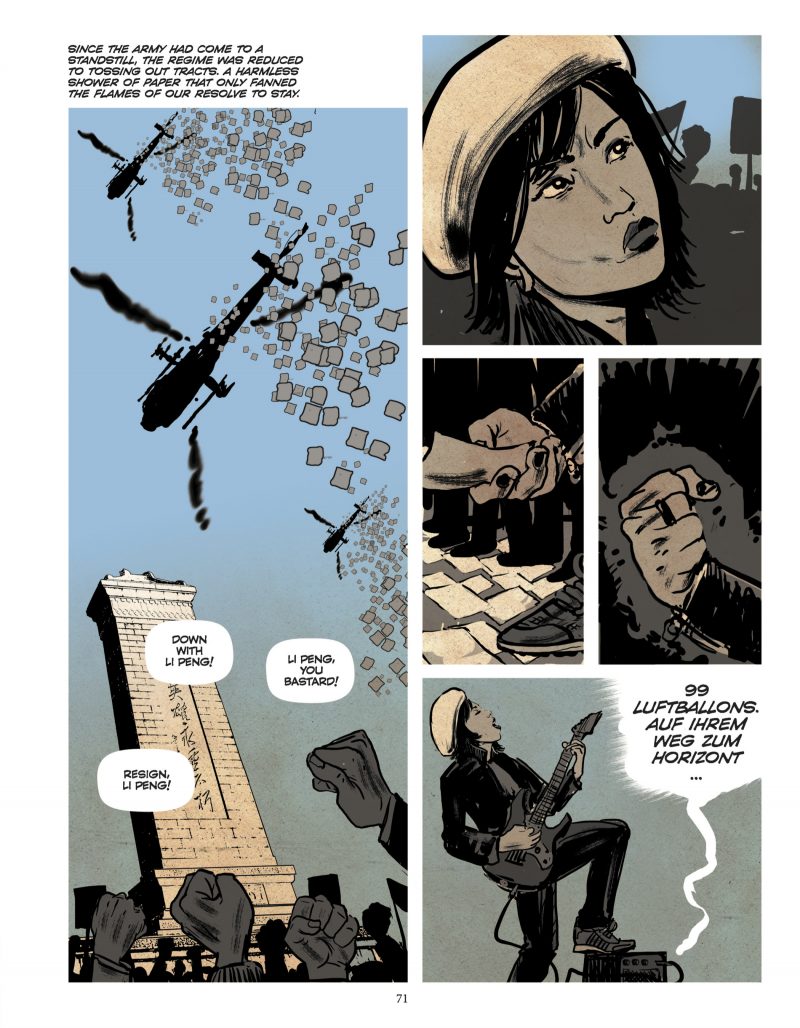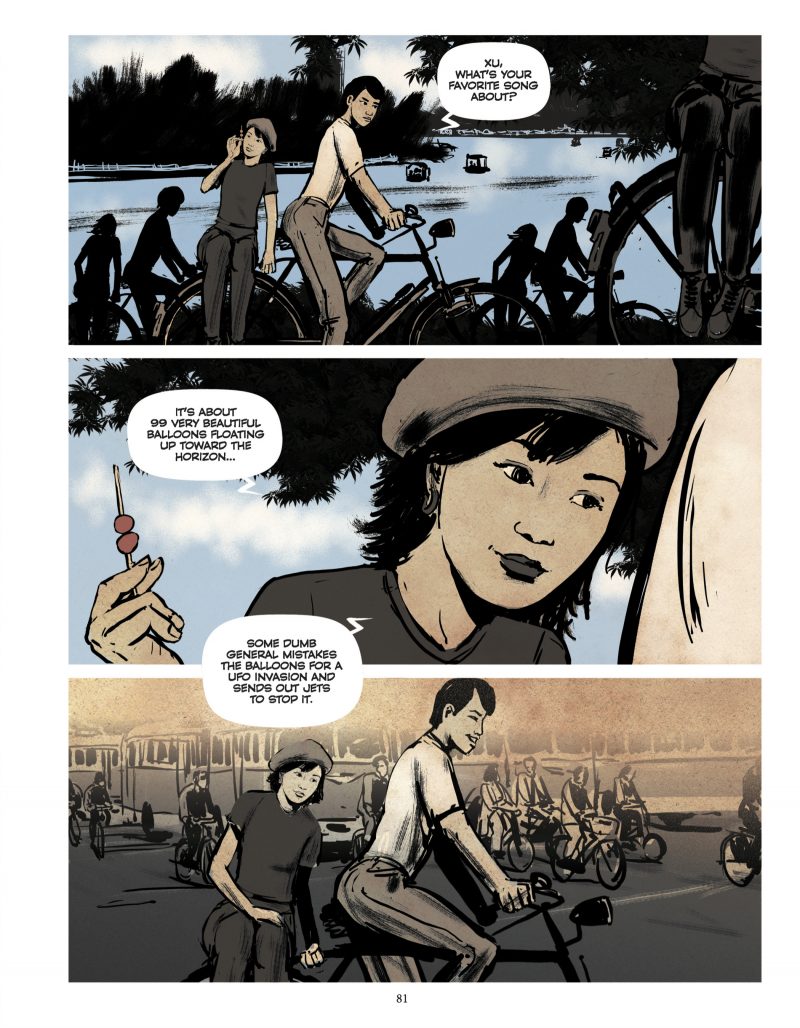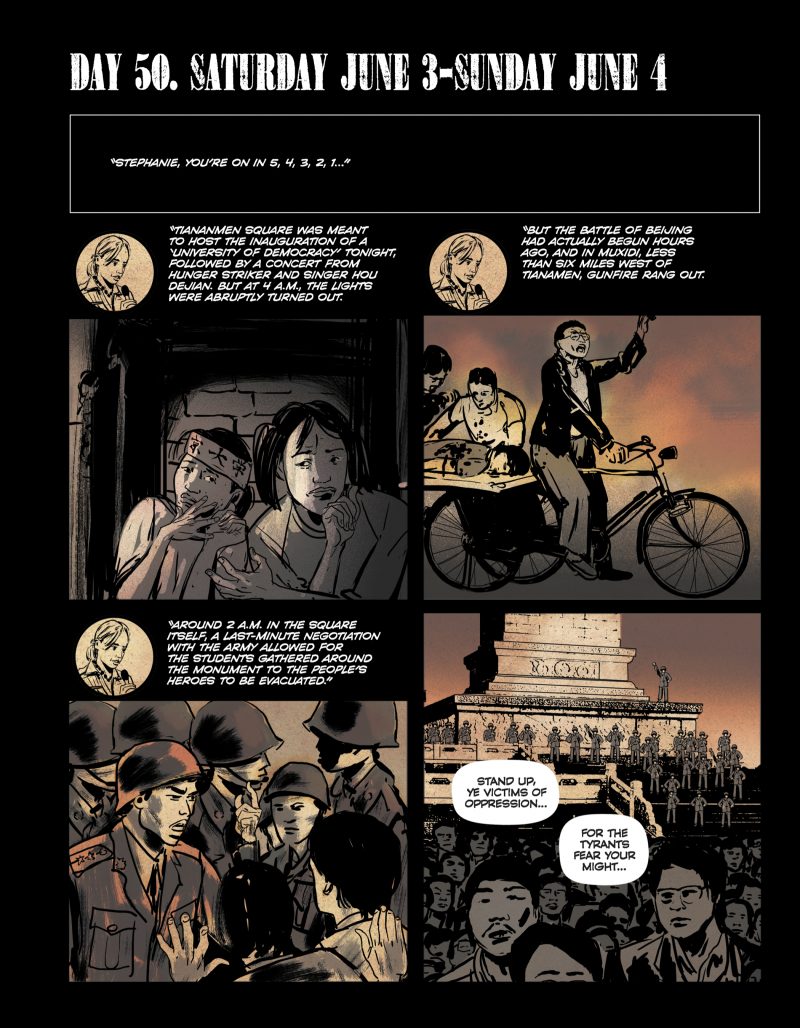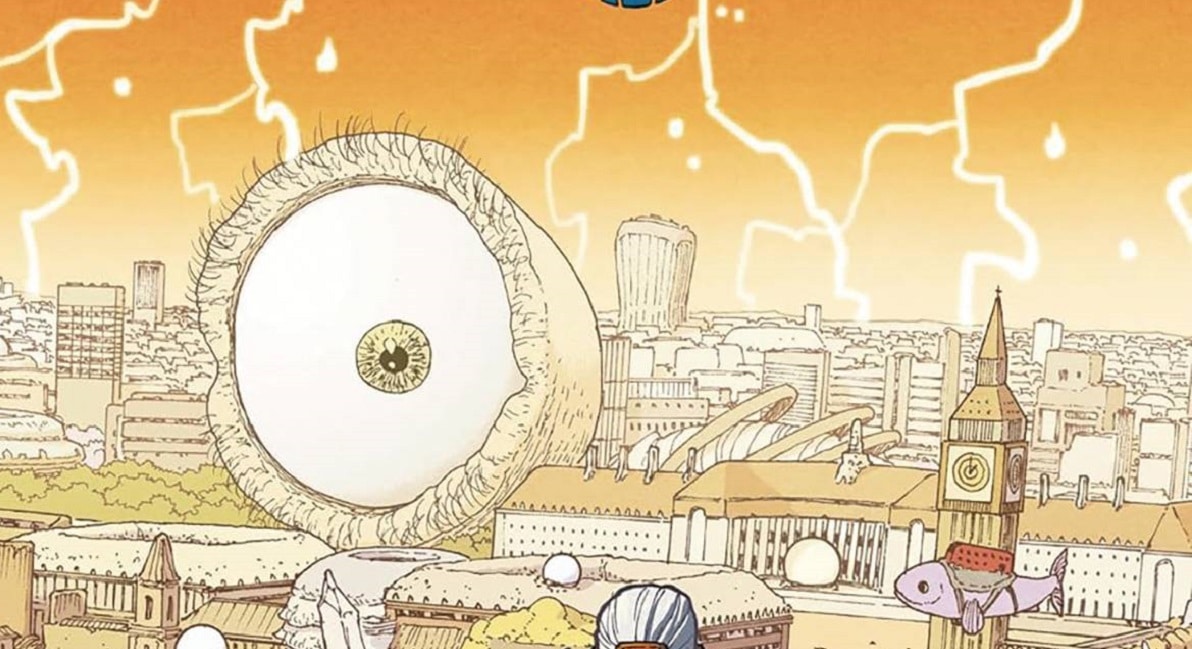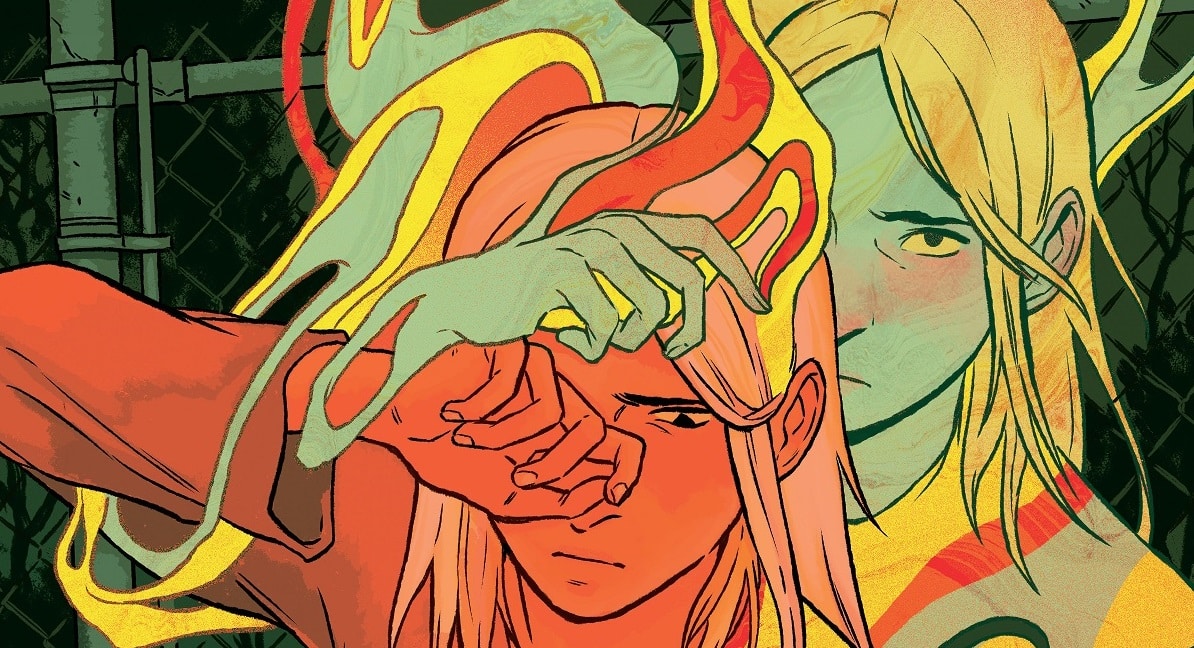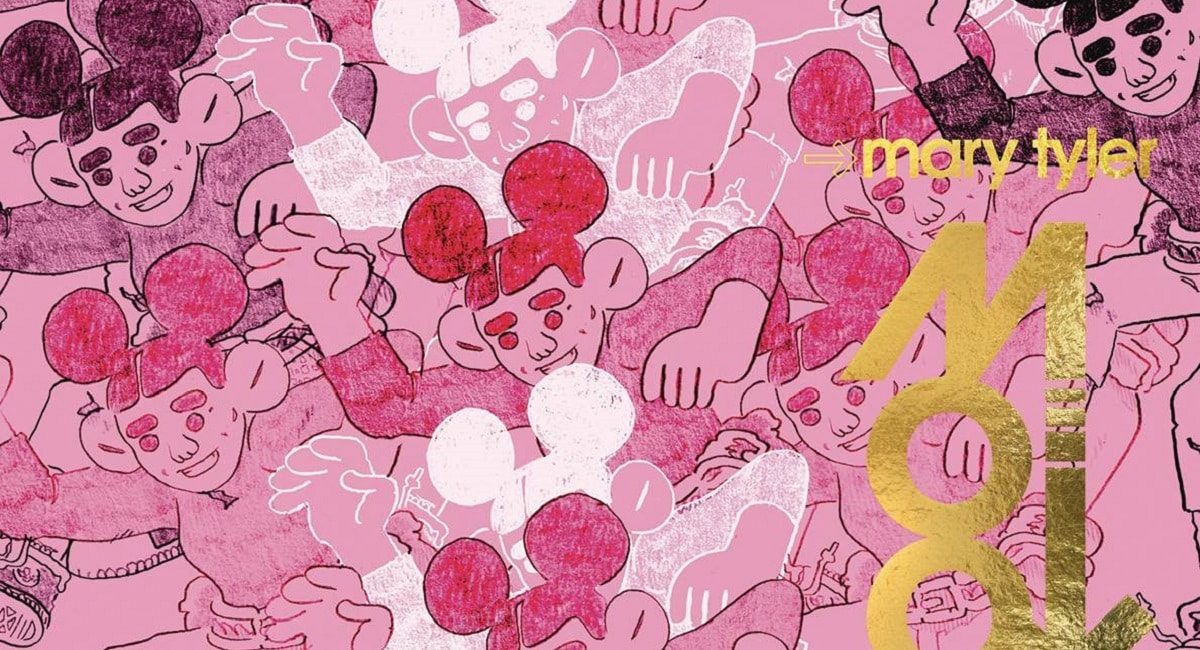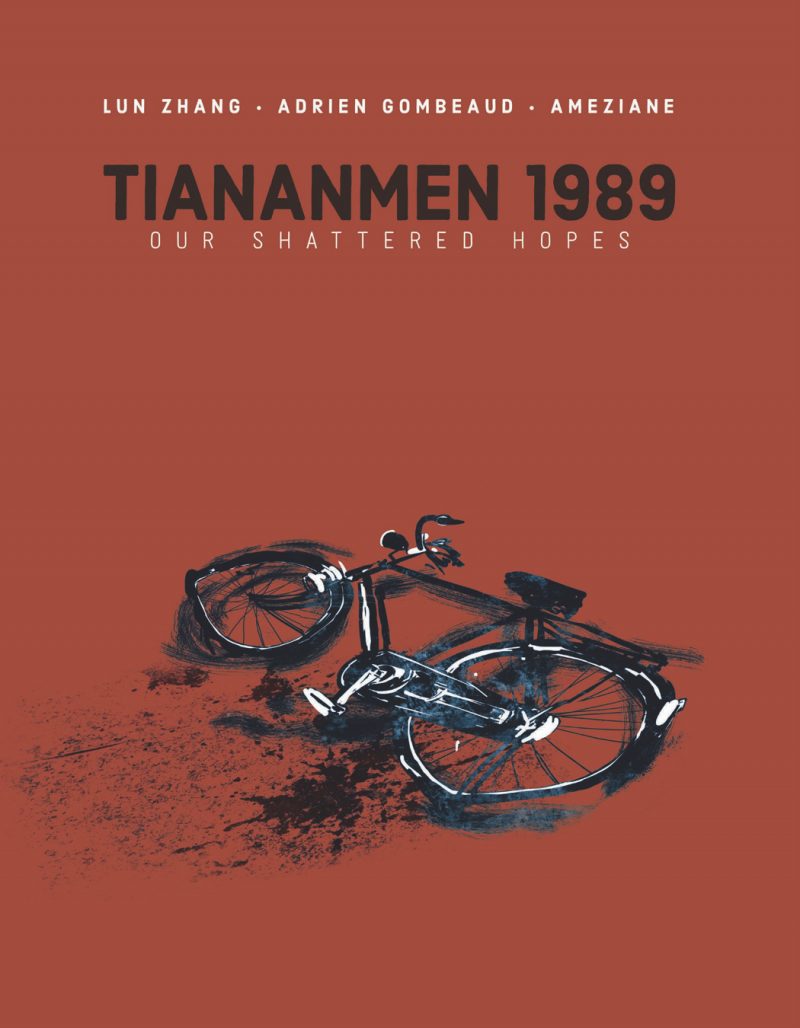
Tiananmen 1989: Our Shattered Hopes
Story: Lun Zhang & Adrien Gombeaud
Translator: Edward Gauvin
Artist: Ameziane
Letterer: Frank Cvetkovic
Designer: Claudia Chong
Editor: Justin Eisinger & Alonzo Simon
Publisher: IDW Publishing
History is a funny thing. The Watts Riots, 1965; the Kent State shooting, 1970; Rodney King, 1992; Hong Kong, 2019; and now the racial injustice protests that are occurring worldwide in light of the death of George Floyd. History repeats itself with each new generational shift in political power. And while each has its own important place in the history books, it is still the iconic image of the lone protester standing against an armored column of tanks in 1989 that brings home the treacherous reaches of political autocracy. Tiananmen 1989: Our Shattered Hopes is Lun Zhang’s first-hand account of that massacre.
Zhang, a Beijing university professor who was among the first to research economics and sociology in the context of post-Cultural Revolution China, teamed with French journalist Adrien Gombeaud and artist Ameziane (Cash Cowboys) to pen a gripping account of an event that the China’s communist party has all but wiped from the history books.
Zhang relives the weeks prior to the June 4th crackdown. China in the 1980s had begun to embrace the wealth of a free market economy under prime minister Deng Xiaoping. Students latched onto this economic opening as a means to push other reforms, citing high-ranking party member Hu Yaobang as their champion. Zhang writes:
“We didn’t necessarily see ourselves as their adversaries. Deng Xiaoping had initiated economic reforms. We merely found it logical to extend these reforms into social and political realities.”
The death of Hu on April 15, 1989, pushed out of power by Deng, sparked an outpouring of grief and public mourning. Students used Hu’s memorial to deliver a petition to Premier Li Peng and voice dissatisfaction with and anger against government policies, including nepotism.
As one of the older protesters at 26, Zhang gets swept into the movement, helping to organize secret meetings and student demonstrators during the Tiananmen hunger strikes. The student’s enthusiasm sucks in the journalists covering the event, soldiers standing watch, and ordinary citizens, who help to supply the student protesters with food and drink. As one of the older protesters, Zhang should know better, and his unease and growing anxiety reflect this as the movement pushes onward. The Party’s heretofore hands-off treatment of the student protesters begins to wear thin one month later as they usher in a stronger military presence: “Soldiers in formation awaiting us at the end of the avenue…This was Deng Xiaoping’s answer.”
This is the beginning of the end for the protests of Tiananmen 1989. We never see what transpires from Zhang’s view after the soldiers roll in, but we don’t need to. The images will soon become 24-hour reels on CNN and other international news networks.
Zhang is the graying narrator recalling the idealism of his youth with the patience and deadpan delivery of a documentarian. His idealistic monologue is set against Ameziane’s theatrical backdrop of red and gold, China’s patriotic colors. When Zhang relates the enthusiasm of hope that comes with China’s economic democratization by Deng in a “dawn’s early light” reference, Ameziane changes his color montage to red and blue against a white backdrop, symbolizing the excitement of the protesters’ elation and euphoria. But while Zhang and Gombeaud’s narrative and Ameziane’s slick change of scenery convey that hopefulness, there is always that intense foreboding, optimism tempered by Zhang’s own nagging suspicions, a return to the red and gold, China’s revolutionary symbolism, that pervades the narrative.
Ask any Chinese person younger than the age of 30 and it’s as if Tiananmen never happened. Zhang knows this. But that’s the beauty behind Tiananmen 1989 and why it’s important in the here and now. With George Floyd and our government’s attempts to rewrite the narrative, it is imperative to have that cultural reference of oppression so that future generations never forget.
Published by IDW Publishing, Tiananmen 1989: Our Shattered Hopes is available in stores now.


